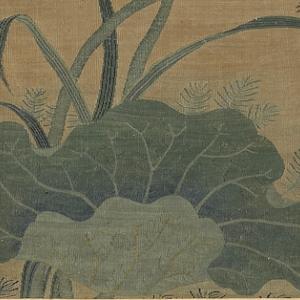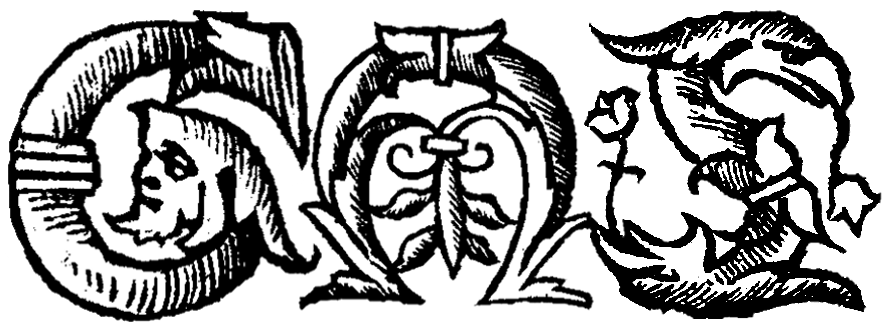To the tune "Magnolia Flower"—"The water in the pond is green | 木蘭花 · 池塘水綠風微暖

Detail from 宋元集繪 冊 宋緙絲翠羽秋荷(Lotuses) , Anonymous, National Palace Museum, Accession Number: K2A001246N000000001PAA [Public Domain]
Read the text (PDF)
Introduction to the Text
In this ci , the speaker recalls when he first met a beautiful woman. The first and final lines relate to the present, framing the old memories which make up the middle section of the song. This creates a contrast between the sorrowful and solitary present and the celebratory atmosphere when he first met his lover. The “flowers” mentioned in the closing lines have a double meaning: they are both flowering trees in the gardens where banquets were held and, even more, the female sing- ers and dancers who entertained at those banquets, like the young woman the poet recalls in the first stanza.
The ci genre of Chinese poetry first emerged in the Sui dynasty (581-619), was further developed in the Tang dynasty (618-907) and matured in the Northern Song dynasty (960-1127). Ci is usually translated into English as “song lyrics”. This is because ci were composed by poets to fit pre-existing tunes. The number of lines, the line lengths, and the tonal and rhythmic patterns of ci vary with the tunes, which number in the hundreds. One common occasion for composing ci would be a banquet: song lyrics would be scribbled down by guests and then sung by musical performers as entertain- ment. Other occasions for composing and enjoying ci would be more casual: the poet might sing the lyrics to himself at home or while travelling (many ci poets were civil servants of the Imperial Court and often had to travel great distances to carry out their work). Sometimes the lyrics would be sung by ordinary people in the same way as folk songs. This oral and musical quality sets it apart from other genres of poetry in China during the same period, which were largely written texts with more elevated objectives. There are two main types of ci : wǎnyuē (婉 约 , “graceful”) and háofàng (豪放 , “bold”). The wǎnyuē subgenre primarily focuses on emotion and many of its lyrics are about courtship and love, while the háofàng subgenre often deals with themes that were considered more profound by contemporary audiences, such as ageing and mortality, or the rewards and disappointments of public service.
Yan Shu, a powerful statesman in the early Northern Song court, had a long and successful career both as an official and as a poet. Among his many literary achievements (which include poetry, song lyrics and prose), his ci compositions are best known. His lyrics are elegant in their choice of words, controlled in the emotions they express, and not as playful as the ci of other well-known poets. They often capture feelings of solitude and sorrow, creating a melancholic mood, but the poet is rarely explicit about what triggers the worry or sadness.
About this Edition
The original text of this ci is based on the edition by Tang Guizhang 唐圭璋 ( Quan Song Ci 全宋詞 , vol 1. Beijing: Zhong- hua shu ju, 1965). Punctuation follows the edition. Since ci poetry rarely includes personal pronouns, and gender-differ- entiated pronouns did not exist in Classical Chinese of this period, the gender of the speaker as well as their perspective (e.g. first-, second- or third-person) must often be deduced by the translator from context.
Further Reading
Chang, Kang-i Sun. The Evolution of Tz’u Poetry: from Late Tang to Northern Sung . Princeton UP, 1980.
- A standard survey of the early history of Chinese song lyrics (romanized as both ci and tz’u ).
Egan, Ronald. “The Song Lyric”. The Cambridge History of Chinese Literature , vol. 1, edited by Stephen Owen, Cambridge UP, 2010, pp. 434-452.
- An overview of the genre.
Owen, Stephen. Just a Song: Chinese Lyrics from the Eleventh and Early Twelfth Centuries . Asia Center, Harvard UP, 2019.
- A recent new history of the genre.
Tang, Guizhang 唐圭璋 , editor. Quan Song Ci 全宋詞 . Zhonghua shu ju, 1965. 5 vols.
- A comprehensive edition of ci from the Song dynasty and the source text for the ci in this collection (introductions and annotations are in Chinese).
To the tune “Magnolia Flower”—“The water in the pond is green” | 木蘭花 · 池塘水綠風微暖
木蘭花
池塘水綠風微暖。記得玉真初見面。重頭歌韻響錚琮,入破舞腰紅亂旋。
玉鉤闌下香階畔。醉後不知斜日晚。當時共我賞花人,點檢如今無一半。
To the tune “Magnolia Flower”
The water in the pond is green, and the wind is slightly warm. I remember meeting Yuzhen for the first time.
The double-head song is loud and emotional,
As the coda began, her waist swung and her red skirt swirled.
5 By the railings under the jade hooks and in front of the fragrant steps,
I was drunk, not knowing that the sun had slanted and the time was late. The men who appreciated the flowers with me at that time,
Now as I count them, are fewer than half.
Critical Notes
Translation
Line 2 Yuzhen is a generic name often used for beautiful singers or dancers.
Line 3 The “double-head song” is a tune which has the same beat for each of its two stanzas.
Line 4 “ Coda” here refers to the structure of longer songs in the Tang and Song dynasties, which usually consisted of three parts (or “chapters”). Po , translated here as “coda”, was the name given to the final chapter, which usually had a quick tempo. The Chinese character literally means “to break in” or “to break apart”.
Line 5 Jade hooks would have been used to hang a curtain over a doorway.
